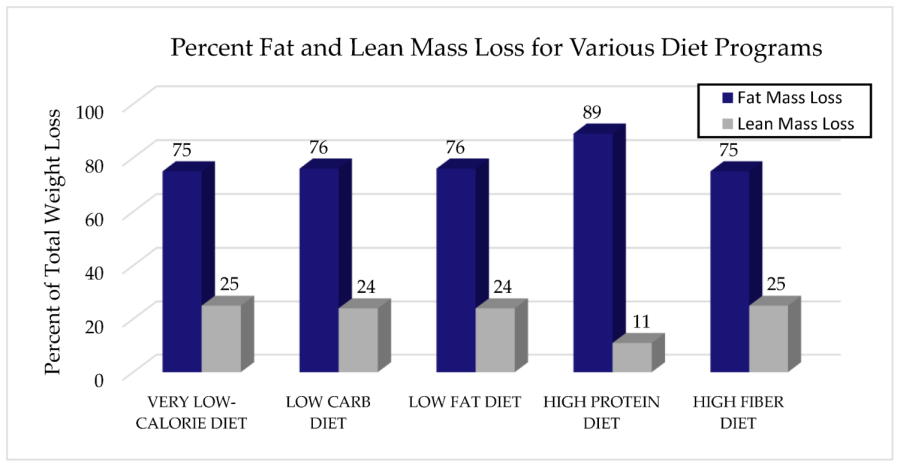Body Recomposition
January 18, 2022
Wondering how to get in shape after the holiday season is a common theme as the new year begins. Goals to lose weight are almost always at the top of everyone’s new year’s resolutions, but is losing weight the real result everyone wants? Body recomposition is a great way to lose the fat many demonize, while also gaining muscle for that toned look that is idealized by social media.
Body recomposition is an approach to weight loss that emphasizes the importance of losing fat, while simultaneously gaining muscle. This can be a long and relentless process, but is one of the better ways to reach your goals this new year. The biggest factors that go into body recomposition is diet/nutrition and exercise.
Diet
Consuming a diet rich in protein has been shown to reduce fat while preserving lean body mass. A study with 88 overweight adults found that a diet that contained 0.64 grams of protein per pound of body weight was more effective in preserving muscle mass and reducing body fat than a diet providing 0.36 grams of protein per pound. It is important to keep in mind that while there is an emphasis on protein intake, you still need to create a calorie deficit to lose fat.
Looking at the graph to the right, you can see that in a high protein diet you are able to lose the most amount of body fat, while also losing the least amount of lean muscle. This further proves that high protein diets allow you to maintain lean muscle mass, while shedding off the fat mass.
Exercise
Contrary to popular belief, cardio is not the answer to weight loss. Though cardiovascular exercises such as running and biking are extremely important for your cardiovascular health, it has the potential to jeopardize your gains. When it comes to weight loss and especially body recomposition, strength training should be your main focus. This will only be effective if you are lifting weights three to six times a week, in order to maintain a growth stimulus in your muscles. One approach to this could be an upper and lower body split throughout the week.
The body composition graph below is a great example of the benefits of strength training for maintaining and building muscle mass, but also demonstrates the importance of cardiovascular exercise (which should not be ignored).
Additional Information
Some additional tips to get the best results with your body recomposition include
- Getting a full eight hours of sleep every night.
- Keeping stress low
Sleep is especially important for muscle recovery because large amounts of testosterone are produced during sleep. Stress levels are also important, as certain stress hormones can affect the rate at which you gain fat.
Finally, the last tip for body recomposition is calorie cycling. This is not a necessity, but can help you in staying consistent with your routine and not feeling deprived. Calorie cycling means eating more calories on days when you’re working out and less on rest days. This will help keep your body from feeling like it is starving, while also staying in the deficit needed for fat loss.
Overall, there is a huge importance on your macros and exercise in order to achieve a body recomposition. That is not to say that sleep, water, and stress are not vital factors that also need to be on your radar to see results. Changing your body composition is a great goal to have and can improve your health greatly, but remember this is not something that has to be done. Your physic does not define who you are!



